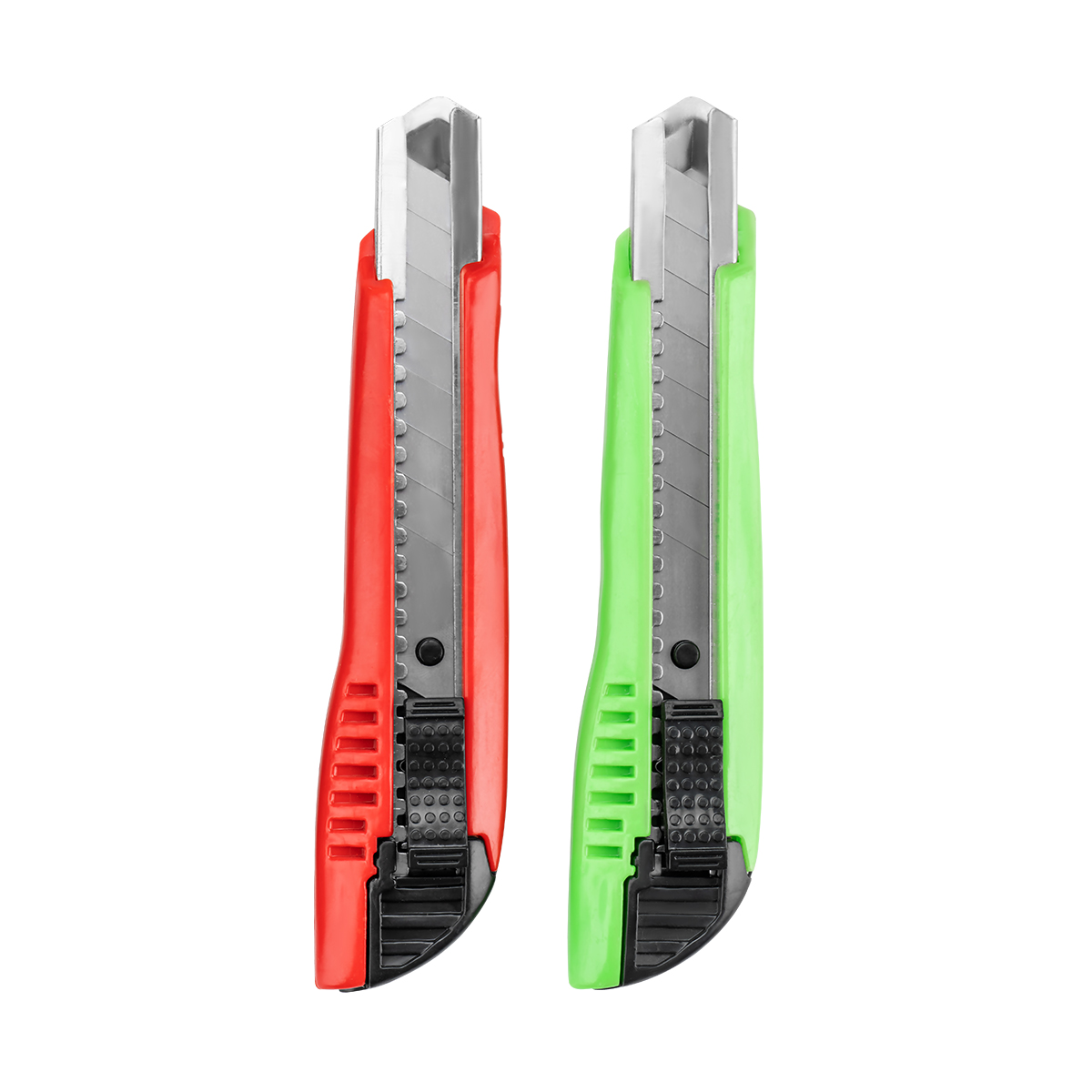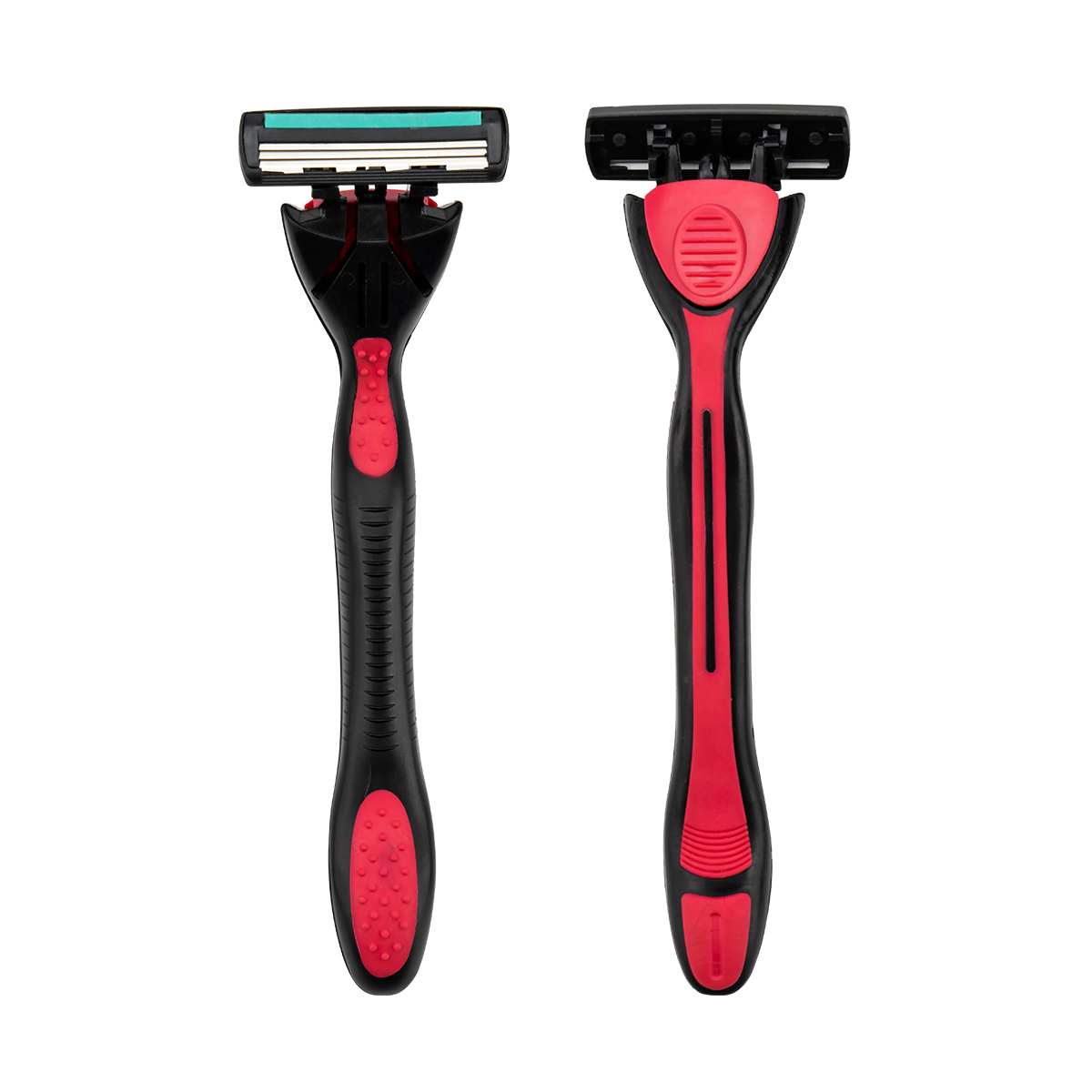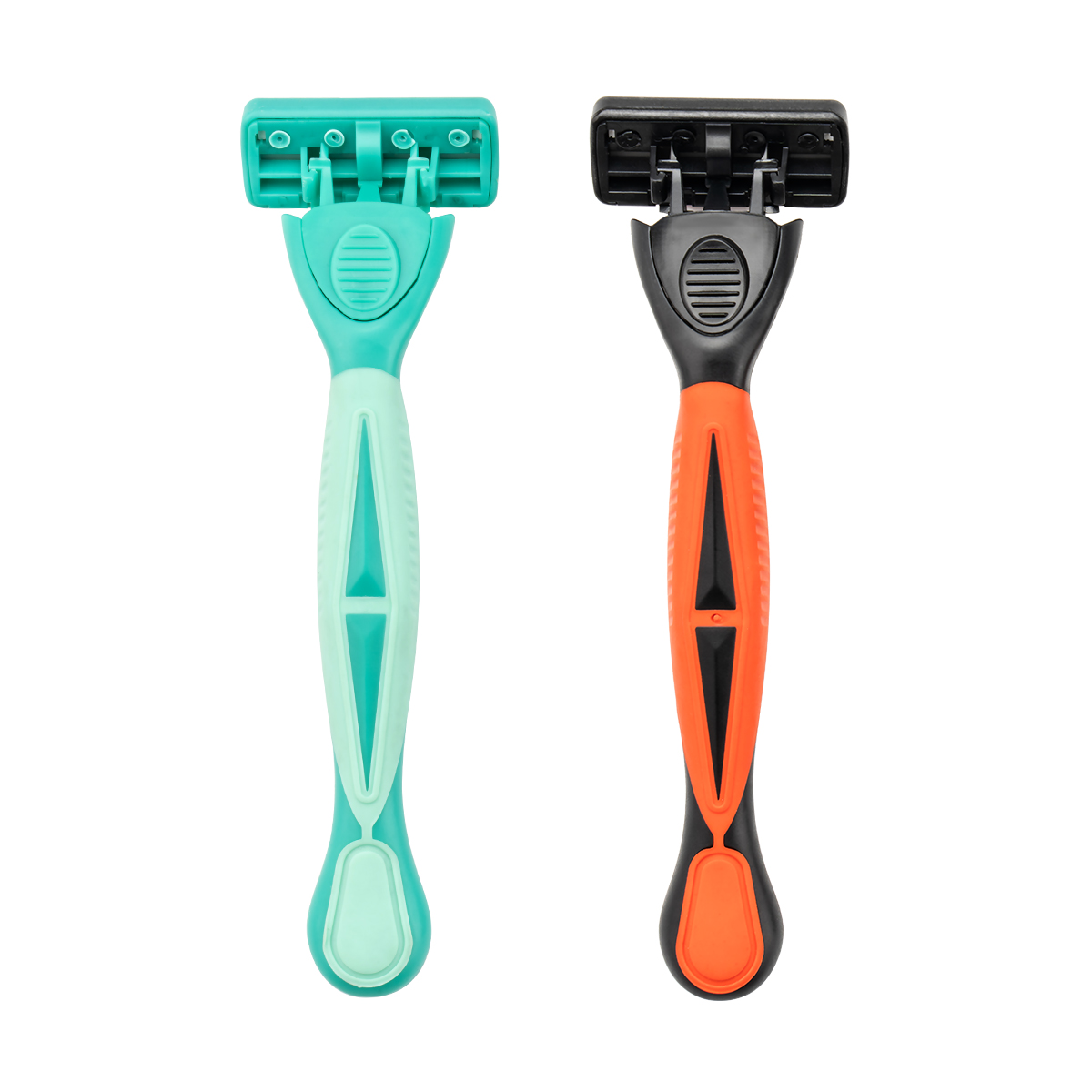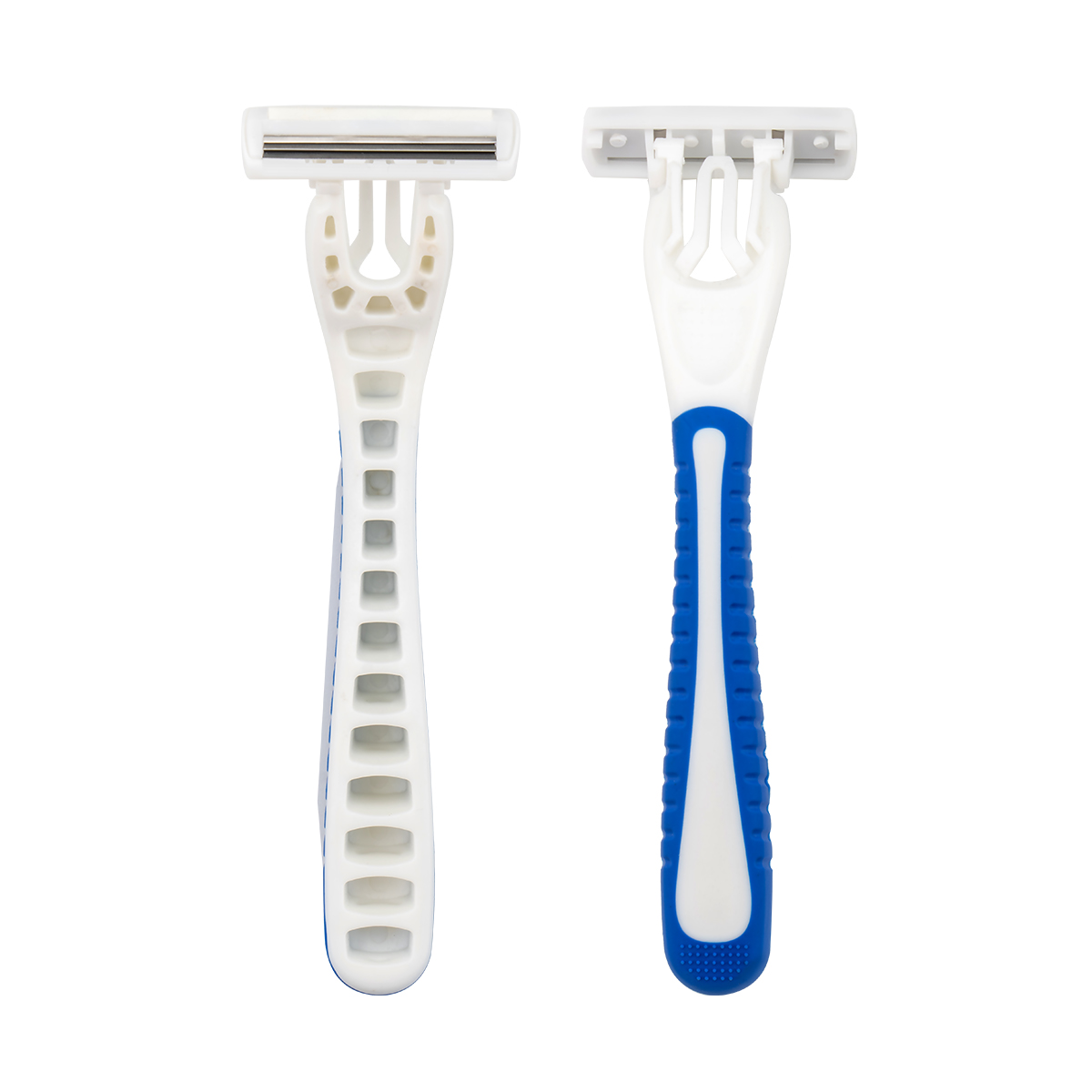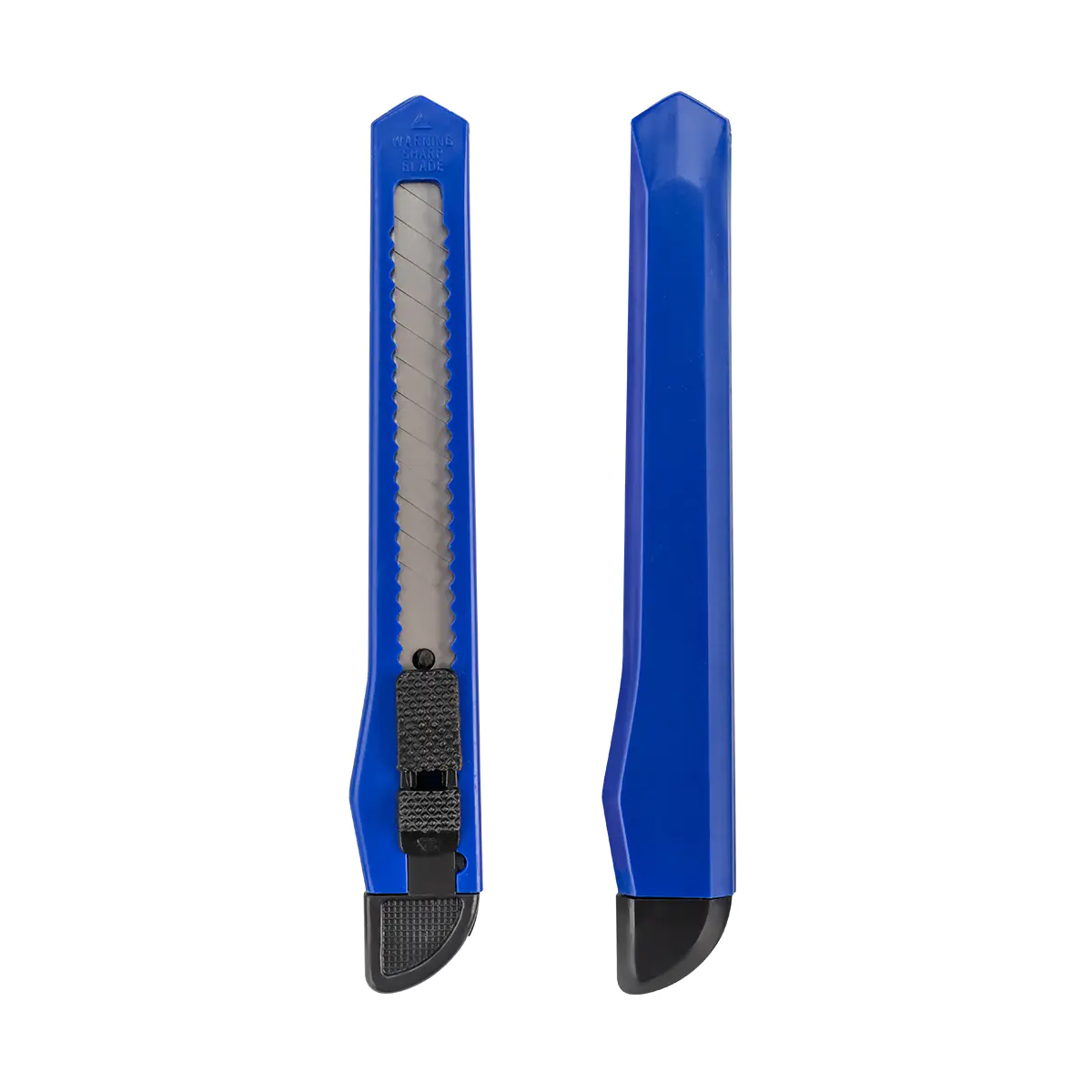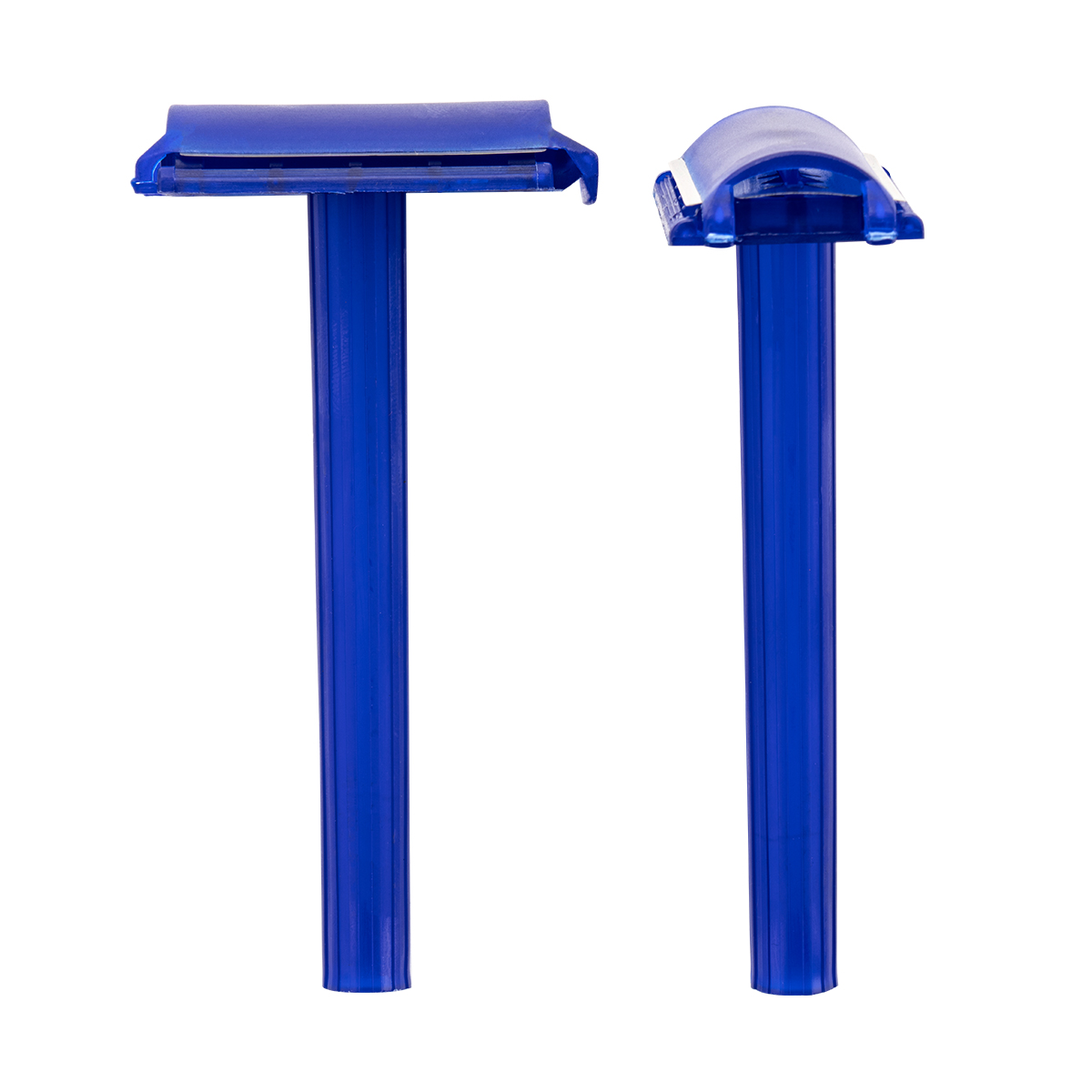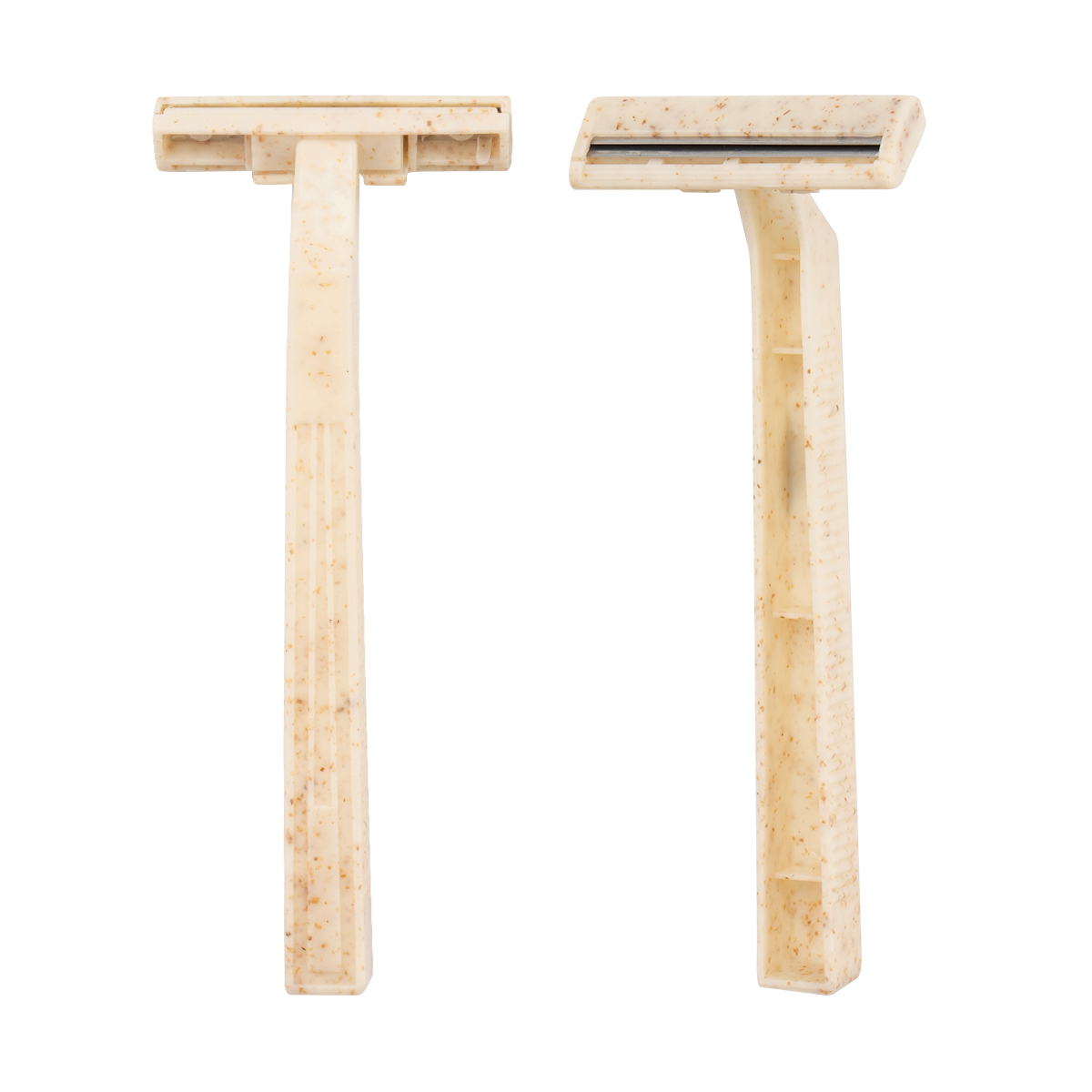We are an industry and trade enterprise
specializing in the production of disposable razors and utility knives for more than 30 years.
Razor News
Disposable razor vs. Electric shaver: Which is best for you
Content
Shaving is a daily ritual for many, yet the tools we use can drastically impact the experience. The two most common options, the traditional disposable razor and the modern electric shaver, offer distinct advantages and disadvantages. This article will help you navigate the choice between them by exploring their features, pros, and cons. Understanding the differences is crucial, as the best shaving method depends on personal factors like your skin type, budget, and lifestyle.
What is a Disposable Razor?
A disposable razor is a single-use or limited-use shaving tool, typically made of plastic, with one or more built-in blades. The entire unit is designed to be discarded once the blades become dull.
-
Features:
-
Blades: Usually features multiple blades (2 to 6) for a closer shave.
-
Lubricating Strip: Most models include a lubricating strip above the blades, infused with ingredients like aloe or vitamin E to reduce friction and skin irritation.
-
Pivoting Head: Many modern disposable razors have a flexible head that pivots to follow the contours of the face or body.
-
Handle: A simple, lightweight plastic handle that provides a basic grip.
-
-
Types of Disposable Razors:
-
Single-Blade: The most basic type, offering a straightforward shave.
-
Multi-Blade: Razors with two, three, four, or even six blades. More blades are designed to cut the hair closer to the skin with a single pass.
-
System Razors: These are often mistaken for disposables, but they feature a reusable handle and replaceable blade cartridges. While the cartridges are similar to a disposable head, the handle's longevity makes them a separate category.
-
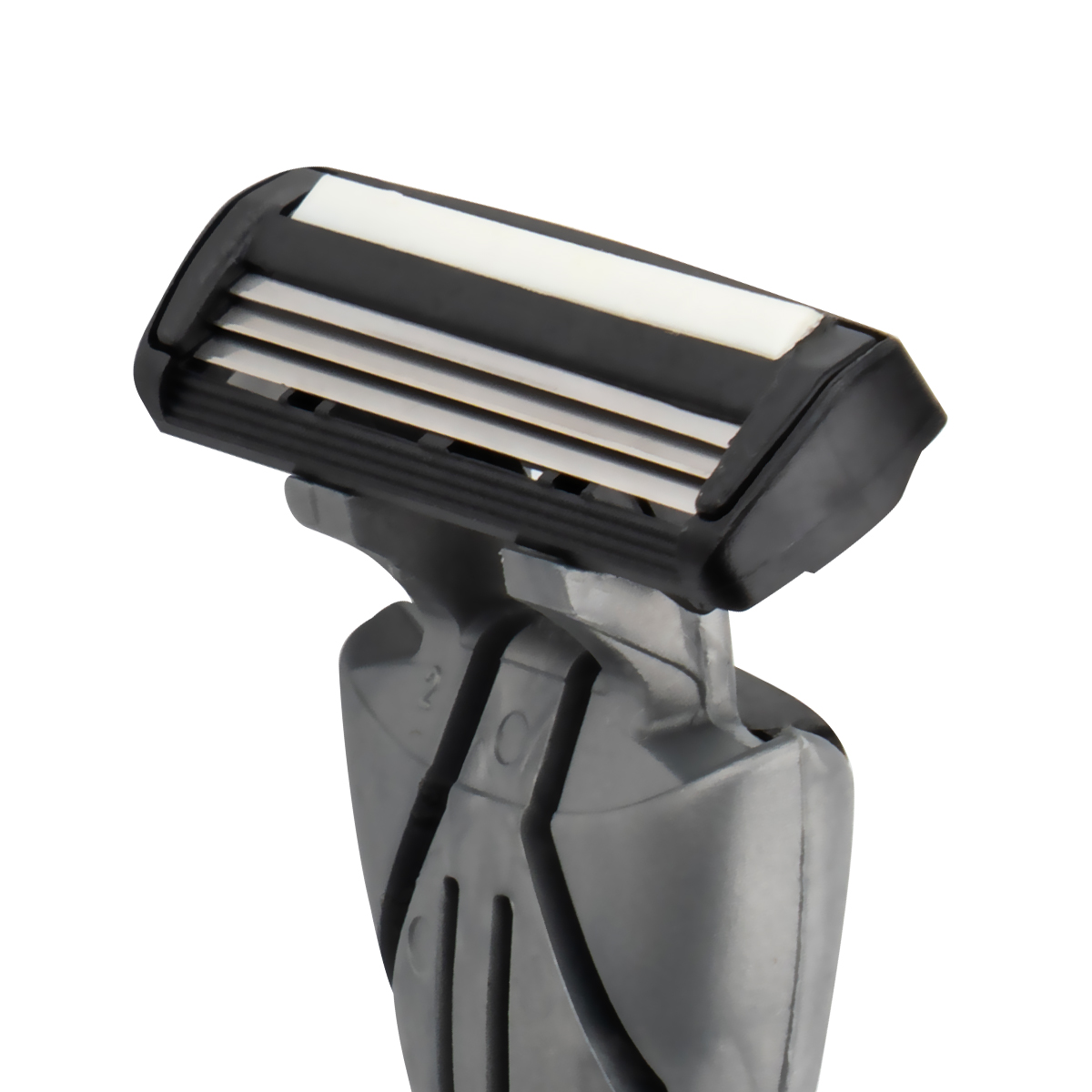 |
 |
What is an Electric Shaver?
An electric shaver, also known as a dry shaver, uses an oscillating or rotating blade beneath a fine metal guard to cut hair without the need for water, soap, or shaving cream. It operates on either a cord or a rechargeable battery.
-
Features:
-
Cutting System: The core of the device is its cutting system, which can be either a foil or a rotary head.
-
Foil Guard: A thin, perforated metal screen (the foil) covers the blades. Hair enters through the holes in the foil and is cut by the oscillating blades underneath. This design is often preferred for those with straight hair or for shaping sideburns.
-
Rotary Head: These shavers have three or more round heads with rotating cutters that pivot and flex to follow facial contours. This design is well-suited for users with hair that grows in different directions.
-
Power Source: Can be powered by a cord or a rechargeable battery, offering the flexibility of dry or wet shaving depending on the model.
-
Cleaning and Maintenance: Many modern electric shavers come with self-cleaning stations or are designed to be easily rinsed under a tap.
-
-
Types of Electric Shavers:
-
Foil Shavers: Ideal for precise, straight-line shaving.
-
Rotary Shavers: Better for navigating the curves of the face and neck.
-
Wet/Dry Shavers: Models that are waterproof and can be used with water, gel, or foam for a more traditional wet shave.
-
Travel Shavers: Compact, battery-operated versions designed for portability.
-
Disposable Razor vs. Electric Shaver
| Feature | Disposable Razor | Electric Shaver |
| Initial Cost | Very Low | High |
| Long-Term Cost | Can be high due to frequent replacements | Low (after initial investment) |
| Shaving Closeness | Excellent; cuts hair at skin level | Good; cuts hair just above skin level |
| Risk of Irritation | High (nicks, cuts, razor burn) | Low (less direct skin contact) |
| Convenience | Low (requires water, shaving cream, and time) | High (can be used dry, anywhere) |
| Speed | Can be time-consuming due to prep | Very fast and efficient |
| Maintenance | None (just rinse and discard) | Requires regular cleaning and occasional part replacement |
| Environmental Impact | High (plastic waste) | Low (reusable and long-lasting) |
| Travel | Very easy to pack and use | Requires charging and may be bulkier |
Disposable Razors: Pros and Cons
Disposable razors offer a quick and easy solution for hair removal, but they come with a set of trade-offs that are important to consider.
-
Pros:
-
Affordability: The initial purchase price of a pack of disposable razors is significantly lower than that of an electric shaver. This makes them an attractive option for people on a tight budget or those who shave infrequently.
-
Close Shave: The sharp blades of a new disposable razor provide a very close shave, resulting in a smooth finish that can last longer than a shave from an electric shaver. This is often the primary reason people choose them.
-
Easy to Find: Disposable razors are widely available in supermarkets, drugstores, and convenience stores, making them incredibly easy to purchase whenever needed, even while traveling.
-
Travel-Friendly: Due to their low cost and lack of electrical components, they are ideal for travel and can be easily packed without worrying about chargers or damage.
-
-
Cons:
-
More Frequent Blade Replacement: While the initial cost is low, the blades dull quickly, often after just 3-10 shaves. This requires frequent repurchasing, and the long-term cost can add up.
-
Higher Risk of Cuts and Irritation: The direct contact of the blades with the skin can lead to nicks, cuts, and razor burn, especially if the blades are dull or if not enough shaving cream is used. The multi-blade design can also be harsh on sensitive skin, causing irritation or ingrown hairs.
-
Environmental Impact: As their name suggests, these products are designed for the trash. The plastic handles and metal blades are difficult to recycle, leading to billions of razors ending up in landfills each year.
-
Clogging: The close spacing of multiple blades can easily get clogged with hair and shaving cream, requiring frequent rinsing during the shave.
-
| Pros | Cons |
| Affordability: The initial purchase price is very low, making them a budget-friendly option. | Higher Long-Term Cost: The need for frequent blade replacement means the cost can add up significantly over time. |
| Close Shave: New, sharp blades provide an exceptionally close and smooth shave. | Higher Risk of Irritation: Direct blade-to-skin contact increases the risk of nicks, cuts, and razor burn, especially for those with sensitive skin. |
| Easy to Find: Widely available in almost all stores, from supermarkets to convenience stores. | Environmental Impact: They are single-use plastic products that are difficult to recycle, contributing to landfill waste. |
| Travel-Friendly: Lightweight, no charging required, and easily disposable, making them convenient for travel. | Clogging: The multi-blade design can easily get clogged with hair and shaving cream, requiring frequent rinsing. |
| No Maintenance: They require no cleaning beyond a quick rinse and are simply discarded after use. | Blade Dullness: Blades dull quickly, often after just a few uses, leading to a less effective shave and increased risk of irritation. |
Electric Shavers: Pros and Cons
Electric shavers provide a convenient and generally safer alternative to traditional shaving, but they also have their own set of drawbacks.
-
Pros:
-
Convenience and Speed: The main advantage is the ability to shave without water, shaving cream, or a mirror, making it perfect for quick touch-ups or shaving on the go. This can save a significant amount of time in a morning routine.
-
Less Irritation for Some Skin Types: Because the blades do not make direct contact with the skin, the risk of nicks, cuts, and razor burn is significantly lower. This makes electric shavers an excellent choice for individuals with sensitive skin or those prone to ingrown hairs.
-
Reusable and Long-Lasting: The initial investment is higher, but an electric shaver is a durable device that can last for years with proper care. Replacement parts, like the foil or cutter block, are needed far less frequently than disposable razor blades, making the long-term cost potentially lower.
-
Versatility: Many electric shavers come with attachments for trimming beards, mustaches, and sideburns, offering more versatility in styling facial hair.
-
-
Cons:
-
Higher Initial Cost: The upfront price for a quality electric shaver is substantially more than a pack of disposable razors. This can be a barrier for some buyers.
-
May Not Provide as Close a Shave: The protective foil or guard prevents the blades from cutting hair at the skin's surface, which can result in a less close shave compared to a new disposable razor. This may require more frequent shaving to maintain a clean-shaven look.
-
Maintenance and Cleaning Required: Electric shavers need to be cleaned regularly to prevent the buildup of hair and dead skin cells. Some models require a special cleaning solution, and the foil or blades will need to be replaced periodically, which adds to the long-term cost.
-
Charging Dependency: Cordless models need to be charged, and if the battery dies mid-shave, you'll have to wait to finish. This can be an inconvenience if you forget to plug it in.
-
| Pros | Cons |
| Convenience & Speed: Can be used for a fast, dry shave anywhere without water or shaving cream. | Higher Initial Cost: The upfront price for a quality electric shaver is significantly more than a pack of disposable razors. |
| Less Irritation: The protective guard minimizes direct contact with the skin, reducing the risk of nicks, cuts, and razor burn. This makes it ideal for sensitive skin. | Less Close Shave: The shave is not as close as that from a disposable razor because the blades cut hair just above the skin's surface. This may require more frequent shaving. |
| Reusable & Long-Lasting: A durable device that can last for years with proper care, making it a more sustainable and cost-effective option in the long run. | Requires Maintenance: Needs regular cleaning to prevent the buildup of hair and debris. Some models require special cleaning solutions or stations. |
| Versatility: Many models come with attachments for trimming beards, mustaches, and sideburns, offering greater flexibility in styling. | Charging Dependency: Cordless models require charging, and a dead battery can interrupt your shave. |
| Lower Environmental Impact: The device is long-lasting, reducing waste from disposable plastics and metals. | Learning Curve: It may take some time for your skin to adapt to the new method, and you might need to adjust your technique for the best results. |
Key Differences
When choosing between a disposable razor and an electric shaver, a direct comparison of their key attributes is essential.
-
Shaving Closeness: The primary distinction is how close they shave. A disposable razor's sharp blades make direct contact with the skin, allowing for an incredibly close shave that feels smooth to the touch. An electric shaver, with its protective foil or guard, cuts hair just above the skin's surface, providing a good shave that is not quite as close.
-
Cost Comparison: The financial aspect involves both initial and long-term costs. The initial price of a pack of disposable razors is very low, making them an affordable entry point. In contrast, electric shavers have a high upfront cost. However, over time, the cost of repeatedly buying disposable razors can exceed the one-time investment in a durable electric shaver, making the latter potentially more economical in the long run.
-
Skin Sensitivity and Irritation: The risk of irritation is a major deciding factor. The direct blade-to-skin contact of a disposable razor can lead to nicks, cuts, and razor burn, especially for those with sensitive skin. An electric shaver's design minimizes this risk, as the blades are shielded, making it a gentler option for reducing irritation and preventing ingrown hairs.
-
Convenience and Time: The two methods offer different levels of convenience. Disposable razors require preparation with water and shaving cream and can be a time-consuming part of a morning routine. An electric shaver offers unmatched convenience, allowing for a quick, dry shave on the go, without the need for additional products or a specific location.
-
Environmental Impact: The environmental footprint differs significantly. Disposable razors contribute to plastic and metal waste, as they are single-use items that are difficult to recycle. An electric shaver is a long-lasting device, and its overall environmental impact is much lower, as only a few small parts may need to be replaced over its lifespan.
| Aspect | Disposable Razor | Electric Shaver |
| Shaving Closeness | Provides an extremely close, smooth shave by cutting hair at the skin's surface. | Cuts hair just above the skin's surface, resulting in a good but not as close shave. |
| Cost Comparison | Low initial cost ($), but high long-term cost due to frequent blade replacement. | High initial cost ($$$), but low long-term cost as the device is durable and replacement parts are infrequent. |
| Skin Sensitivity | Higher risk of nicks, cuts, razor burn, and irritation due to direct blade-to-skin contact. | Lower risk of cuts and irritation, making it a better option for sensitive or acne-prone skin. |
| Convenience & Time | Requires shaving cream/gel and water, and can be time-consuming due to the careful technique needed. | Can be used for a quick, dry shave anywhere, saving significant time. Wet/dry models offer more flexibility. |
| Environmental Impact | High waste due to disposable plastic handles and difficult-to-recycle metal blades. | Low waste, as the device is long-lasting and only requires the occasional replacement of a small part. |
How to Choose?
Skin Type
-
Sensitive Skin: If you are prone to razor burn, bumps, or ingrown hairs, an electric shaver is likely the better choice. The protective guard minimizes direct contact with the blades, reducing irritation.
-
Normal to Oily Skin: If your skin can handle a close shave without irritation, a disposable razor will provide an exceptionally smooth finish.
Budget
-
Upfront Cost: If your budget is tight and you need a low-cost solution right away, a disposable razor is the clear winner. The initial investment is minimal.
-
Long-Term Value: For those willing to invest more upfront, an electric shaver can be more economical in the long run. The cost of frequent blade replacements for disposables can quickly surpass the one-time purchase price of a durable electric shaver.
Travel and Convenience
-
On-the-Go Shaving: An electric shaver offers unmatched convenience. It can be used without water or shaving cream and is ideal for quick shaves at the office, in the car, or while traveling.
-
Portability: While electric shavers are often bulkier and require charging, disposable razors are lightweight, compact, and perfect for throwing into a travel bag without a second thought.
Shaving Routine
-
Daily Shaver: If you shave every day, an electric shaver's speed and convenience can make your routine much faster.
-
Infrequent Shaver: If you only shave a few times a week or less, a disposable razor might be a better fit, as the cost of a long-lasting electric shaver may not be justified.
![]() No. 2-2, Oufu Road, Zhangting Town, Yuyao City, Ningbo City, Zhejiang, China.
No. 2-2, Oufu Road, Zhangting Town, Yuyao City, Ningbo City, Zhejiang, China.
![]() +86-574-87560886/87560055
+86-574-87560886/87560055
![]() +86-574-87560885
+86-574-87560885
Copyright © Ningbo Chuangxin Cutting-Tool Manufacture Co., Ltd.

 English
English 中文简体
中文简体 русский
русский Español
Español